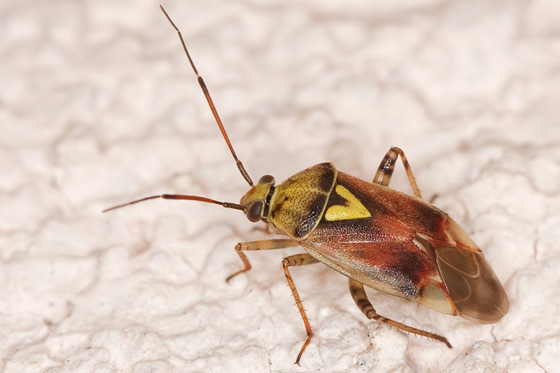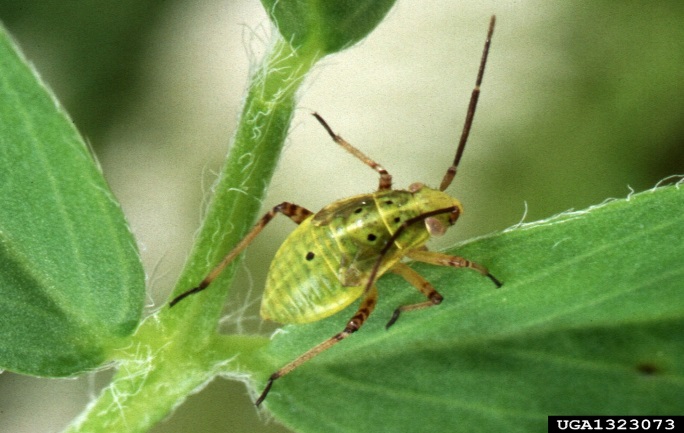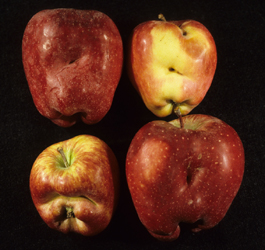
Western plant bug
| Primefact number | Edition | Published | Author |
|---|---|---|---|
| 1558 | First | May 2017 | Plant Biosecurity and Product Integrity |



Western plant bug (Lygus hesperus) is not present in Australia. This pest is a serious threat to many of Australia’s horticultural industries.
Western plant bugs are sap sucking insects similar in appearance to common stink bugs (Figure 1). Western plant bugs feed on developing flowers and fruit of a wide range of host plants, including many commercial horticultural species.
Notifiable status
Western plant bug (Lygus hesperus) is a notifiable plant pest in NSW.
All notifiable plant pests and diseases must be reported within 1 working day. You can report notifiable plant pests and diseases by one of the following methods:
- Call the Exotic Plant Pest Hotline 1800 084 881
- Email biosecurity@dpi.nsw.gov.au with a clear photo and your contact details
- Complete an online form
A full list of notifiable plant pests and diseases can be found in Schedule 2 of the NSW Biosecurity Act 2015.
Description
Adults
Adult western plant bugs are approximately 6 mm in size and similar in shape to common stink bugs.
The colouring of western plant bugs varies from greenish yellow to brown. The upper part of the back has a distinguishing yellow or pale green triangle marking (Figure 1).
Immature stages
Western plant bug nymphs are green in colour and very immature stages resemble aphids.
As the nymphs mature they develop five black spots on the back. Older nymphs have four black spots on the thorax and one on the abdomen (Figure 2).
Damage
All life stages of western plant bug feed by sucking juices from the plant while injecting toxins at the same time.
Direct feeding damage to flower buds and fruit can lead to bud and flower abortion or result in distorted or reduced quality fruit.
Damage at early stages of fruit development can cause the fruit to be deformed and misshapen when it reaches maturity (Figure 3).
Hosts
Western plant bug has a very wide host range including at least 25 crop plants and 117 ornamental or weed plants.
Common commercial host plants of western plant bug include alfalfa, apple, apricot, artichoke, asparagus, beans, cabbage, canola, carrot, celery, cotton, cucumber, eggplant, grape, pear, pistachio, peach, strawberry, sugarbeet, sunflower and tomato.
Some weed hosts of lygus bugs include chickweed, dandelion, red clover, red root pigweed, lamb’s quarters, plantain, goldenrod, and asters.
Spread
Western plant bug eggs can be transported over long distances in leaves of host plants. Adults and nymphs can also be carried long distances on contaminated plant material.
Adult western plant bugs spread locally by flying short distances within and between crops.
Distribution
Western plant bug is native to and found across North America.
Actions to minimise risk
Put in place biosecurity best practice actions to prevent entry, establishment and spread of pests and diseases:
- practice “Come clean, Go clean”
- ensure all staff and visitors are instructed in and adhere to your business management hygiene requirements
- monitor your crops regularly
- monitor and control weeds that can harbour the pest
- source plant material of a known high health status from reputable suppliers
- keep records

